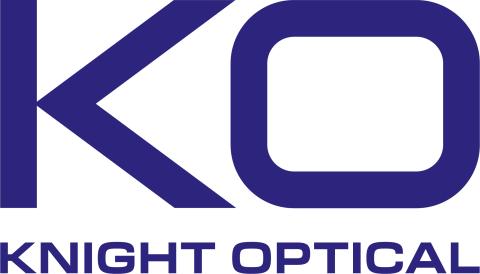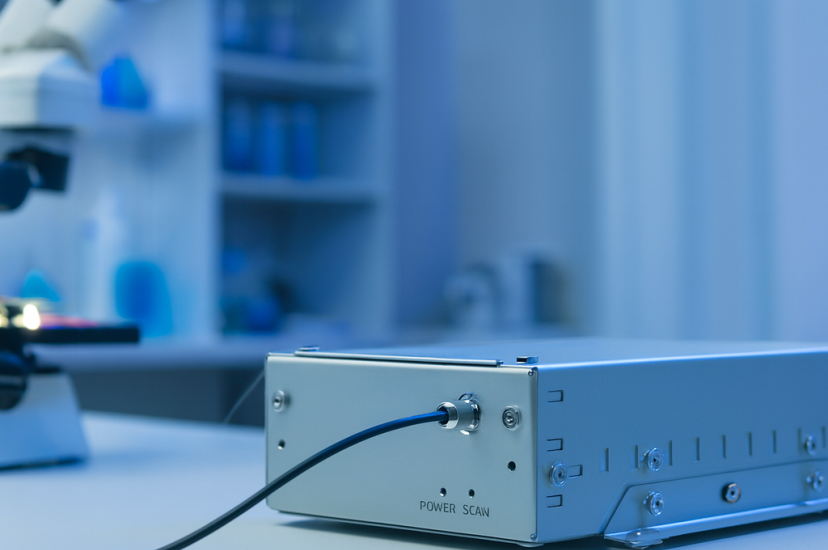The latest optical products for life sciences in 2025

Photonic technology is used in the life sciences thanks to its ability to interact with biological materials at the cellular and molecular level (Credit: Motion Drama/Shutterstock.com)
With its ability to control light at the nanoscale and interact with biological materials, photonics offers numerous applications that are helping to revolutionise the study and advancement of life sciences.
What are the life sciences?
The life sciences encompass a range of fields, all dedicated to studying living organisms. The overriding purpose is to seek to understand the fundamental principles of life. Disciplines within the life sciences include biology, biochemistry, microbiology, genetics, ecology, botany and zoology.
Life science research touches all aspects of life, from advancements in medicine for healthcare; to aiding crop yields, disease resistance, and sustainable farming in agriculture. In biotechnology, life science research can help the development of new products and technologies, such as biofuels and biomaterials. Such research can even provide insights into climate change, conservation efforts, and ecosystem management.

Experience the ORCA® Series: Redefining Scientific Imaging
Discover state of the art scientific imaging with the remarkable ORCA® series from Hamamatsu Photonics - designed to meet the ever-evolving demands of life science research. Renowned for their unparalleled speed, high resolution, and exceptional sensitivity, ORCA® cameras capture even the most intricate details, ensuring superior image quality while preserving signal integrity.
Spanning wavelengths from the near-infrared to the ultraviolet, the ORCA® series is designed for flexibility, supporting a diverse range of research applications. Each camera is engineered with features tailored to specific scientific needs, such as advanced dynamic range, customisable sensor sizes, and innovative shutter technologies.
Trusted by researchers worldwide, the ORCA® series has contributed to over 1,000 scientific publications in just four years, underscoring its pivotal role in academic discovery. Elevate your research and unlock new possibilities with the ORCA® cameras —where technology meets breakthrough science.
SPONSORED BY
Photonics in life sciences
Photonics and optics are widely used in the life sciences thanks to their ability to interact with biological materials at the cellular and molecular level. Light can be absorbed, scattered, or emitted by various biological molecules, which provides valuable information about their structure, function, and health status.
Principles of photonics in life science applications
- Some of the key principles surrounding the application of photonics in life sciences include:
Light-matter interaction: Different biological molecules interact with light in different ways. By analysing the patterns of absorption, scattering, or emission, scientists can gain insights into the properties and behaviour of these molecules. - Specificity: Light can be tailored to target specific molecules or cellular structures, allowing researchers to focus on areas of interest within a complex biological system.
- Sensitivity: Photonic techniques boast exceptional sensitivity, enabling the detection of minute changes in biomolecules or cellular processes.
- Non-invasiveness: Many photonic techniques benefit from being non- or minimally invasive, allowing for the study of living systems without causing any harm to the sample.
Applications of photonics in the life sciences
One of the key areas where photonic technology plays a crucial role is in imaging techniques. Photonics enable high-resolution imaging methods such as confocal microscopy, multiphoton microscopy, and optical coherence tomography. These techniques allow researchers to visualise intricate cellular structures, track cellular processes, and investigate tissue architecture with exceptional detail and precision. By harnessing the unique properties of light, photonics-based imaging systems facilitate breakthroughs in understanding the complexities of biological systems.

Knight Optical high-quality interference bandpass filters
Knight Optical's high-quality interference bandpass filters pass light of a narrow bandwidth/wavelength and reflect/block all other light. Our standard ranges of stock filter are available from 214nm-2000nm in various bandwidths from narrow 3nm FIN type up to 65-100nm FIW type to meet most requirements.
Where most manufacturers' filters are simply sealed into a metal housing with just resin and so susceptible to leakage of moisture, our range of interference filters are individually CNC-scribed and hermetically sealed to form a secure stack in their rings to ensure maximum long-term stability. Our narrow band interference laserline filters are typically used in imaging applications whilst our fluorescence and dichroic excitation and emission filters are typically used in spectroscopy, microscopy and medical fluorescence applications.
SPONSORED BY

Photonics have additionally contributed to the field of diagnostics and medical instrumentation, enabling the development of techniques for disease detection and monitoring. For instance, biophotonic technologies like fluorescence spectroscopy, Raman spectroscopy, and optogenetics enable real-time analysis of biochemical markers, cellular activity, and genetic information. These advancements have helped to enable early detection of diseases, personalised medicine, and improved treatment outcomes.
Photonics also find applications in genomics and proteomics research. High-throughput DNA sequencing techniques, such as next-generation sequencing, rely on photonics-based methods for accurate and efficient analysis of genetic information. Additionally, optogenetics, a technique that uses light to control cellular activity, enables precise manipulation of neurons and facilitates a deeper understanding of brain function and neurological disorders.
In addition, photonics have paved the way for the development of innovative therapeutic approaches. Laser-based treatments, such as photodynamic therapy and laser surgery, offer precise and minimally invasive solutions for various medical conditions, including cancer treatment and vision correction.

Unlock Precision in Life Sciences with the VARIUS Spectrometer
The Avantes VARIUS OEM spectrometer is engineered for seamless integration into life science instruments, offering exceptional performance in fluorescence, absorbance, and biomedical diagnostics applications. Its compact, thermally stable design ensures reliable measurements even in challenging environments, from lab benchtops to point-of-care devices.
With high sensitivity, low stray light, and customizable wavelength configurations, the VARIUS OEM supports precise detection of biological markers and subtle spectral changes critical to diagnostic accuracy. Its robust construction, USB/RS232 interfaces, and integration flexibility make it ideal for system developers in biotech, clinical diagnostics, and pharmaceutical research.
Built on over 30 years of spectroscopy expertise, Avantes provides dependable solutions that help accelerate innovation and ensure reproducible results in life sciences.
SPONSORED BY

Advantages and limitations of photonics in the life sciences
Advantages:
- High resolution: The high resolution offered by photonic techniques allows researchers to visualise structures at the cellular and subcellular level.
- Sensitivity: Even minute changes in biological processes can be detected with photonic techniques.
- Label-free analysis: Certain photonic techniques allow for label-free analysis, thus reducing the need for chemical modifications that can alter the sample.
Limitations:
- Cost: Some research labs may find more advanced photonic equipment to be prohibitively expensive, limiting accessibility.
- Complexity: The operation of sophisticated photonic instruments can require specialist expertise.
Advances in innovative photonic products continue to push the boundaries of research and clinical practice in the life sciences, presenting new opportunities and helping to overcome some of the limitations faced by traditional methods in order to improve our understanding and treatment of life itself.
Photonics and optical products available for life sciences on the market now
Vendors of products in the life science market include Access Laser, which provides lasers for novel surgical procedures, or tracking and viewing the progress of pharmaceutical development. The lasers’ wavelength enables hemostatic incisions to improve healing times and can be centred from 9.3µm to 9.6µm to match the peak absorption coefficient of hydroxyapatite, the main mineral constituent in enamel, dentin and bone.
Analytik has an array of life science solutions for a variety of microbiology and molecular diagnostics applications. The portfolio ranges from devices for PCR, real-time PCR, bioimaging, liquid handling, electrophoresis and sample homogenisation to consumables.
The Avantes Varius OEM spectrometer is engineered for seamless integration into life science instruments, offering exceptional performance in fluorescence, absorbance, and biomedical diagnostics applications. Its compact, thermally stable design ensures reliable measurements even in challenging environments, from lab benchtops to point-of-care devices.
Brighterwave provides visible lasers and laser projection solutions for life science applications. It focuses on custom visible laser light solutions and multi-wavelength boxes laser projection and beam steering solutions for automotive, life science and AR/VR applications.
Cobolt offers a series of laser assemblies specifically tailored for advanced optogenetics research. Solutions include single-line lasers with stable and efficient coupling into multimode fibres, two lasers on a common platform launched into one common fibre coupler, or two lasers sitting side by side launched into one fibre coupler each, suitable for 2-into-1 coupling using, for example, fused fibres.
Coherent segments the life sciences instrumentation market into three categories based on core functional use – biotechnology, medical and scientific. When it comes to biotechnology, the company offers life sciences optics, laser engines, all-purpose optics, laser diode modules, DPSS lasers, thermoelectric coolers and thermoelectric systems. For medical, there are HPL bars and stacks, CO2 laser optics, 1 micron optics, DPSS lasers, thermoelectric coolers and thermoelectric systems. For scientific, the company offers CO2 laser optics, micron optics, life science optics, DPSS lasers, thermoelectric and thermoelectric systems.
CoolLED designs and manufactures cutting-edge LED illumination systems for researchers and clinicians. The company has specialised in fluorescence microscopy since it introduced its commercially available LED illumination system in 2006. LED microscope lighting is popular thanks to its stability, long life and energy efficiency, as well as its superior safety and environmental features.
Edmund Optics’ optical components are used in many life science-related applications and medical devices, such as qPCR instruments, fluorescence microscopes (confocal, multiphoton, super-resolution), flow cytometers (cell sorting), ophthalmoscopes, optical coherence tomography (OCT), and more. The company offers all the optical components needed for building medical devices, including high-precision filters, lenses, mirrors, beamsplitters, polarisers, microscope objectives, and more. In addition, the company’s portfolio has a range of light sources and cameras to complete the set-up, whether it is for a microscope, an OCT system, or a different type of optical medical device.
Hamamatsu researches how biological phenomena interacts with light to create the tools required. The company can use biological materials to create models – for example, it has made environmental sensors that use the photosynthesis system of algae, and created photosensitive nerve cells that use the photoactive euglena enzyme to understand the mechanisms of neurological disease. The research could lead to applications in drug discovery and advanced medical fields.
Jenoptik produces high-tech objective lenses for medical technology. These highly specialised and customised optics products open up new possibilities in prevention, diagnosis and treatment. Its medical technology objective lenses can be used in ophthalmology, dental technology or dermatology, for example, for focusing laser beams or achieving targeted deflection. Fluorescence objective lenses enable DNA to be read during sequencing, and objective lenses and modules can also be used successfully in radiology.
Knight Optical provides interference bandpass filters from 214nm-2000nm in various bandwidths from narrow 3nm FIN type up to 65-100nm FIW type to meet most requirements. These are individually CNC-scribed and hermetically sealed to form a secure stack in their rings to ensure maximum long-term stability. They are typically used in imaging applications whilst our fluorescence and dichroic excitation and emission filters are typically used in spectroscopy, microscopy and medical fluorescence applications.
Available from Laser Components is a range of solutions to aid the understanding of cellular and molecular processes that provide doctors and medical engineers with valuable insights for the development of new diagnostic and therapeutic procedures, using the advantages of laser technology. Applications include microscopy, spectroscopy, photodynamic therapy, thermal laser applications, positioning of patients, UV sterilisation, breath gas analysis, components manufacturing, optical coherence tomography and high-power laser research.
Leica Microsystems offers microscope solutions to support complex microsurgery applications. The microscopes provide optimal and reliable visualisation, including built in fluorescence filters and GLOW 800 augmented reality fluorescence. This and ICG create a simultaneous white-light and real-time fluorescent blood flow view.
Lumencor’s solid-state technologies have provided ground-breaking improvements in the quality of simple LED illumination available to both researchers and instrument manufacturers in the life sciences. This has enabled expansion in the capabilities of fluorescence microscopy in terms of sample throughput and spatial resolution, and driven the development of many new applications.
Microlight3D is a specialist manufacturer of high-resolution micro-scale 2D- and 3D-printing systems for industrial and scientific applications. Its most recent launch was a collection of resins with diverse properties for mechanical meta-materials and life sciences applications. They are designed to allow developers to explore 3D microprinting using different materials and reproduce miniscule objects. The resins join the existing two in the range and can be used with the company’s microFAB-3D ultra-high resolution 3D-printing system, based on two-photon polymerisation. This direct laser writing technology is used to create a solid 3D-printed structure from photo-activable materials.
Products from MKS Instruments’ life and health sciences range are used in a diverse array of applications, including bioimaging, medical instrument sterilisation, medical device manufacturing, analytical, diagnostic and surgical instrumentation, consumable medical supply manufacturing and pharmaceutical production. PicoQuant’s products are used in a wide range of applications, such as life science, materials science and optical quantum technology. Academic researchers use them in their search for answers and help in gathering data for publications in top-ranking journals, and by researchers in industry for their day-to-day laboratory work and in carrying out routine quality control of global industrial players.
Photon Lines’ life sciences partners are leaders in their respective fields, including Abberior Instruments, founded by Professor Stefan Hell, one of the inventors of the stimulated emission depletion (STED) super resolution nanoscopy technique. Products span from super resolution microscopes, including the Abberior Instruments add-on Stedycon and Expert Line STED system, to the Argolight fluorescence quality testing system, which is becoming an essential tool in light microscopy facilities.
Omek Optics focuses on OEM digital microscopy solutions for the inspection, medical and biomedical industries. It offers a line of standard modular microscopes covering a broad spectral range, with special attention to homogeneous high yield illuminations. Solid State is an electronics group supplying commercial, industrial and military markets with components, assemblies and manufactured units for use in specialist and harsh environments, including industrial, robotics, medical, life sciences and transportation sectors. The company has expertise in industrial and ruggedised computing, displays, battery power solutions, communications, imaging technologies, electrical and electronic components.
Solid State has five principal trading companies: Solid State Supplies, Steatite, Pacer Components, Active Silicon and Willow Technologies. Willow Technologies also has a US-based subsidiary, American Electronic Components (AEC), in Indiana. For more than 45 years, Sutter Instrument has led in the manufacture of precision instrumentation for the neurological sciences. The company has the latest in patch clamp and intracellular amplifiers and software and continues to expand our line of manipulators, light sources, multi-photon microscopes and micropipette pullers. The latest products include the Trio MPC-165 thinprofile manipulator, Lambda 821 optical beam combiner capable of accessing seven LEDs, and Dendrite, a data acquisition system that gives researchers access to the advantages of SutterPatch software.
Vortran Laser Technology’s products serve the high-end laser market, supplying both OEM companies and end users. The company’s primary focus is in the life sciences market, where its laser technologies serve applications in cell biology, optogenetics, microscopy and imaging, flow cytometry, DNA sequencing, optical tweezers, spectroscopy, pharmaceutical drug discovery, and well plate reading, to name a few.
This is not an exhaustive list. If you provide products in the life science space and would like your company to be included, please let us know at: editor.electro@europascience.com

